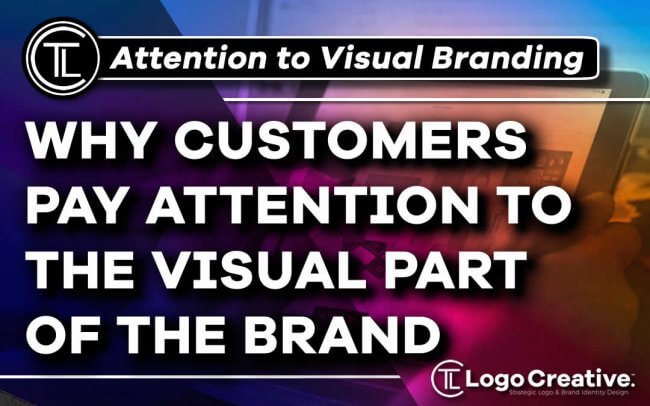Why do customers and buyers pay attention to the visual part of the brand? Here are the key aspects to help you understand this modern marketing trend.
Table of Contents
Why Customers and Buyers Pay Attention to the Visual Part of the Brand
The modern world is full of brands, each interested in selling any service or product to the end customer. However, the number of different companies is so great that an unprepared person may experience slight dizziness.
Take a look at your city or any metropolis nearby. What do you see? Most likely, it will be a large number of advertising logos, billboards, and video ads. But why do customers and buyers pay attention to the visual part of the brand? Here are the top reasons.
The Visual Part Allows Brands to Stand Out From the Crowd
People always pay attention to original brands that offer interesting products. Style, brand logo, slogan, and marketing campaigns are ways to stand out from the crowd.
How does anyone know about your brand if you are like a billion other start-ups hoping to be lucky? Let’s take a look at a simple example. Suppose you are a student and want to order papers.
Most likely, you will use some search query like “buy persuasive essay.” Chances are, you will opt for a writing service with a stylish website, beautiful logos, and a well-thought-out marketing campaign.
The visual part is what the human brain focuses on. Therefore, we subconsciously trust those companies and brands trying to surprise us or prove their uniqueness.
Visualization Helps Create Associations and Positive Brand Perception
Take a look at McDonald’s or Starbucks. What do you associate with these brands? Chances are, you will immediately think of childhood or adolescence when you eagerly walked out for a burger or delicious coffee.
Brands create logos, corporate identity, interior design, and even music that programs people to trust them. Typically, brands use pastel colours, sweet melodies, and the right words to evoke positive emotions and customer loyalty.
This is very important since many competitors dream of getting a large share of the market.
Logos and Promo Videos Attract Attention to the Best
There is another aspect of why the visual part is so important to brands. Take a look at Coca-Cola, BMW, Tesla, or KFC. Most likely, you associate these brands with quality, popularity, and priority.
Companies spend a lot of money on visual parts and advertising to get people to associate their products and services with the best choice. For example, everyone knows that one of the most popular drinks is Coca-Cola.
Is this the most delicious beverage on the market? Probably not. However, the abundance of advertising and market positioning imposes a cult of exclusivity.
Most likely, many people subjectively consider such a beverage to be the best because of its popularity. The visual part contributes to this stereotype.
Visual Part Simplifies Brand Selection
Since the market is oversaturated with brands, the choice of any company, clothing store, or restaurant comes down to the visual part.
What if you want to find the closest Japanese restaurant in your city? Let’s say you found about 30 options thanks to Google and want to pick only one.
Most likely, you will stop your eyes on the most beautiful logo, stylish interior, or original menu. However, the visual part is multifaceted and goes far beyond the name or logo.
This is precisely the aspect that allows people to simplify the selection process. Even if you offer the best products or services on the market, your competitors with the best visual designs may be more successful than you.
People Are Tired of Standard Visual Ads
Brands often use the Internet, television, and banners for advertising. As a rule, many companies use standard approaches to positioning goods and services on the market.
But what if you need something extraordinary? Take a look at Japanese ads (noodles, drinks, or toys). Most likely, you will think that the screenwriter was under drugs.
However, you will remember the non-standard melody and images of the characters from the 10-second video for a long time.
The visual part allows you to grab people’s attention and build a base of potential customers and clients.
Visual Parts Are an Opportunity to Assess the Prospects of a Brand
As a rule, people are very subjective when it comes to the visual part. Many brands have gone bankrupt precisely because of incorrect positioning, logo failure, or marketing strategy.
Imagine that you and your competitor are selling beer. Your bar has a mediocre design, and the logo was created in five minutes. At the same time, your competitor hired a designer, created a stylish interior, and the logo design is so bright and extraordinary that most passers-by will surely remember it.
Which brand will be more successful?
Chances are, your competitors will dominate your niche market. The thing is that the visual part is something like bright packaging for a Christmas present.
You do not know what is inside, but bright colours and beautiful ornaments prompt you to open the box. That is why the visual part is so important for business, and your company should plan a certain amount to create a stylish design and logo.
Join The Logo Community
We hope you enjoyed this article about, Why Customers and Buyers Pay Attention to the Visual Part of the Brand.
If you would like more personal tips, advice, insights, and access to our community threads and other goodies, join us in our community.
You can comment directly on posts, access our community threads, have a discussion and ask questions with our founder Andrew.
If you’re looking to learn more about brand strategy, we highly recommend eRESONAID with our friend and acclaimed brand strategist and author Fabian Geyrhalter, it’s packed full of knowledge and insights you will need to learn to become a brand strategist or apply what you learn within your own business.


